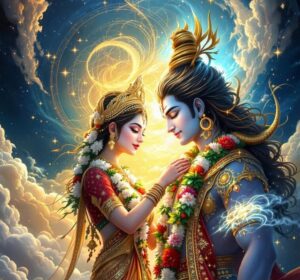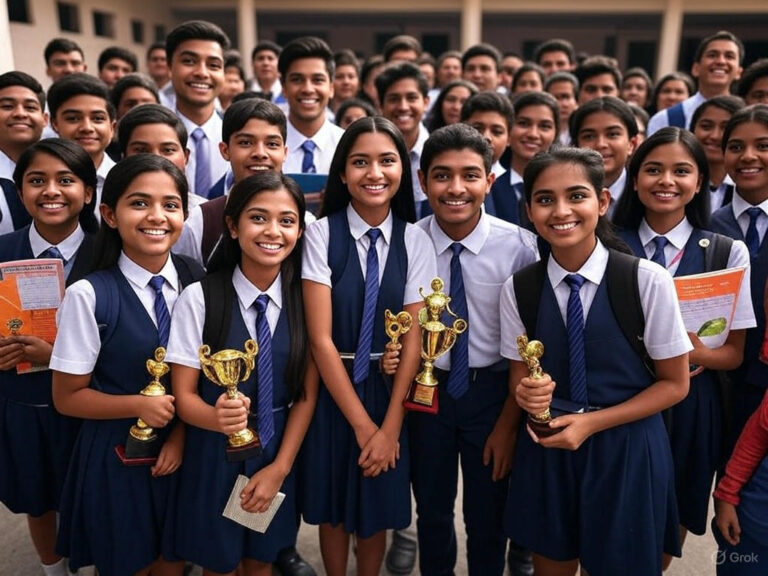Maha Shivaratri is one of the most significant festivals celebrated by Hindus, dedicated to Lord Shiva. The name “Maha Shivaratri” translates to the “Great Night of Shiva,” and it is observed on the 13th or 14th night of the dark fortnight of the month of Phalguna (usually falling in February or March, depending on the lunar calendar).

Significance of Maha Shivaratri:
-
Spiritual Importance:
- Night of Worship: Maha Shivaratri is considered the night when Lord Shiva performed the Tandava (the cosmic dance) and is believed to be the night of Lord Shiva’s marriage to Goddess Parvati. Devotees believe that by worshipping Lord Shiva on this night, they can attain moksha (liberation from the cycle of birth and death).
- Overcoming Darkness: It is a night dedicated to overcoming ignorance and darkness, symbolizing the victory of truth, light, and wisdom. By staying awake and meditating on this night, one is believed to attain spiritual awakening and purification.
-
Legends and Myths Associated with Maha Shivaratri:
- The Legend of the Samudra Manthan: According to one story, during the churning of the ocean (Samudra Manthan) by the gods and demons, a deadly poison emerged from the ocean. Lord Shiva drank this poison to save the world, and as a result, his throat turned blue, earning him the name Neelkanth (the blue-throated one). Maha Shivaratri marks the day when this event took place.
- Marriage of Shiva and Parvati: Another legend speaks of the night when Lord Shiva and Goddess Parvati were united in marriage. This union is symbolic of the eternal cosmic balance between male and female energies.
- Day of the Cosmic Dance: Another story suggests that Lord Shiva performed his Tandava dance, symbolizing the creation, preservation, and destruction of the universe. Devotees seek to align themselves with this cosmic rhythm through fasting, prayers, and meditation.
-
Rituals and Practices on Maha Shivaratri:
- Fasting: Devotees observe a strict fast, often abstaining from food and water for the entire day and night. Some may also fast only on certain foods or take a fruit or light meal.
- Night Vigil: The night of Shivaratri is spent in prayer and meditation. Devotees stay awake throughout the night (a practice known as Jagran). It is believed that this vigil will help in overcoming ignorance and will help one attain spiritual progress.
- Puja and Offerings: Devotees perform special rituals (puja) at temples or at home. The worship typically involves:
- Bathing the Shiva Lingam: Water, milk, honey, and other offerings like bilva leaves (Bael leaves) are poured over the Shiva Lingam. The act is said to purify the mind and soul.
- Chanting Mantras: Devotees chant mantras such as “Om Namah Shivaya” repeatedly, which is believed to invoke Lord Shiva’s blessings and protect the devotee from negative influences.
- Offering Bilva Leaves: Bilva leaves are considered sacred to Lord Shiva. Offering them to the Shiva Lingam is said to please Lord Shiva and bring blessings.
- Lighting Lamps: Devotees light lamps or diyas (small oil lamps) throughout the night to symbolize the victory of light over darkness.
-
Astrological Significance:
- Alignment of the Moon and the Stars: It is believed that during Maha Shivaratri, the alignment of the planets and stars is such that it provides an ideal time for meditation, introspection, and spiritual practices. The day is thought to be particularly potent for making spiritual advancements.
- Lunar Cycle: Maha Shivaratri falls on the 14th day of the waning moon, which is significant in Hindu tradition as it marks the time when energies are naturally more conducive for spiritual focus and elevation.
Cultural Practices:
- Temple Celebrations: In temples, especially those dedicated to Lord Shiva like the Kashi Vishwanath Temple (Varanasi), Somnath Temple (Gujarat), and others, special ceremonies are conducted. Thousands of devotees gather for night-long prayers and processions.
- Devotional Songs and Kirtans: Devotional songs (bhajans) and chants (kirtans) dedicated to Lord Shiva are sung during the night, creating an atmosphere of devotion and reverence.
- Pilgrimages: Many devotees undertake pilgrimages to sacred Shiva temples and holy sites, especially in places like Varanasi, Haridwar, Kedarnath, and Rishikesh.
Benefits of Observing Maha Shivaratri:
- Spiritual Cleansing: Observing Maha Shivaratri with devotion is believed to purify the mind and soul, leading to spiritual growth.
- Forgiveness and Liberation: It is said that any sins committed, whether knowingly or unknowingly, are forgiven by Lord Shiva if one worships him with full devotion on this day.
- Fulfilling Wishes: Devotees believe that praying to Lord Shiva on Maha Shivaratri can help fulfill their desires, both material and spiritual, as Lord Shiva is the deity of destruction and creation, capable of bringing both transformation and blessings.
Global Appeal of Hindu Philosophy:
- Spiritual Practices: Many people from the West and other parts of the world are interested in spirituality, yoga, and meditation, and they often turn to Hindu traditions for these practices. Maha Shivaratri, with its focus on meditation, introspection, and spiritual awakening, resonates with people seeking deeper meaning in their lives.
- Yoga and Meditation: The connection between Lord Shiva and the practice of yoga is another point of attraction. Lord Shiva is often considered the “Adi Yogi” or the first yogi, and his teachings are associated with spiritual discipline, self-realization, and enlightenment. Foreigners practicing yoga and meditation find Maha Shivaratri to be a meaningful occasion to deepen their practice.
Interest in Hindu Festivals and Cultural Diversity:
- Fascination with Hinduism: As Hinduism is one of the world’s oldest and most diverse religions, foreign interest in Hindu festivals has grown, especially in countries with significant Indian diaspora communities. Foreigners interested in global cultures may find Maha Shivaratri an exciting and unique festival to learn about and participate in.
- Experiencing Cultural Traditions: Many tourists visit India to experience its rich culture, and festivals like Maha Shivaratri are an opportunity for them to immerse themselves in local customs and rituals. They may travel to famous temples like Varanasi, Kedarnath, or Rishikesh to witness the grandeur and spiritual energy of the celebrations.
Pilgrimage and Travel to India:
- Visiting Sacred Sites: Foreign visitors who are drawn to the idea of pilgrimage or sacred journeys may be attracted to temples associated with Lord Shiva. The pilgrimage to places like Kedarnath and Kashi Vishwanath during Maha Shivaratri offers both spiritual fulfillment and a chance to connect with India’s ancient traditions.
- Festivals as a Cultural Experience: Some travelers come to India specifically for the festival. They might participate in the rituals, experience the night-long vigils, listen to kirtans and chants, or simply be part of the celebration in iconic places like Varanasi, Rishikesh, or Puri. The vibrant atmosphere, along with the devotion and energy of the crowd, can leave a lasting impression.
The Global Influence of Lord Shiva:
- Lord Shiva as a Symbol: Lord Shiva is often seen as a symbol of peace, destruction (to destroy ignorance), and creation. His figure—whether in the form of the Shiva Lingam, the Tandava dance, or the third eye—attracts a universal audience who may identify with his transformative qualities, the balance of opposites, and his connection to meditation and inner peace.
- Shiva in Popular Culture: Lord Shiva’s influence is also evident in popular culture around the world, such as in music, literature, art, and even films. For instance, many musicians, artists, and yoga practitioners around the world incorporate elements of Shiva’s symbolism into their works. This cultural presence invites people to explore more about him, especially on a special occasion like Maha Shivaratri.
Social Media and Online Communities:
- Virtual Celebrations and Information Sharing: With the rise of social media platforms and online communities, Maha Shivaratri has found a global audience. International spiritual influencers, yoga teachers, and religious leaders share the importance of this festival, leading to greater awareness. Some online groups or live-streamed events invite people to participate in the rituals or learn about the festival’s meaning, making it accessible to those who can’t be physically present in India.
- Global Yoga Communities: Many yoga retreats and ashrams around the world (including those in India and elsewhere) host Maha Shivaratri celebrations for foreigners. These retreats often incorporate the festival’s practices into their programs, including meditation, fasting, chanting, and reflection.
Interest from Western Spiritual Movements:
- Influence of Prominent Spiritual Leaders: The teachings of renowned spiritual leaders like Sadhguru (Isha Foundation), Sri Sri Ravi Shankar (Art of Living), and Swami Vivekananda have had a significant global influence. These leaders often emphasize the importance of Maha Shivaratri, attracting followers from around the world who seek to connect with the deeper spiritual aspects of the festival.
- The Popularity of Meditation and Silence: Many foreigners interested in meditation and mindfulness are drawn to the concept of silence and stillness during the Maha Shivaratri night vigil. The practice of staying awake and meditating for long hours resonates with those looking to quiet the mind and find inner peace.
Participation in Rituals:
- Rituals and Offerings: Foreigners who have been introduced to Hindu rituals may be curious to try out or witness the unique aspects of Maha Shivaratri worship, such as:
- Offering bilva leaves (a symbol of Lord Shiva’s grace).
- Chanting the Om Namah Shivaya mantra, known for its calming and meditative qualities.
- Observing the fast (known as vrat) or participating in a night-long vigil (Jagran) with others in the community.
- Fasting and Cleansing: The act of fasting on this night, which is believed to cleanse the mind, body, and spirit, attracts people from all around the world who follow various wellness practices. Some might adopt the fast as a form of physical detoxification, while others do so for its spiritual benefits.






